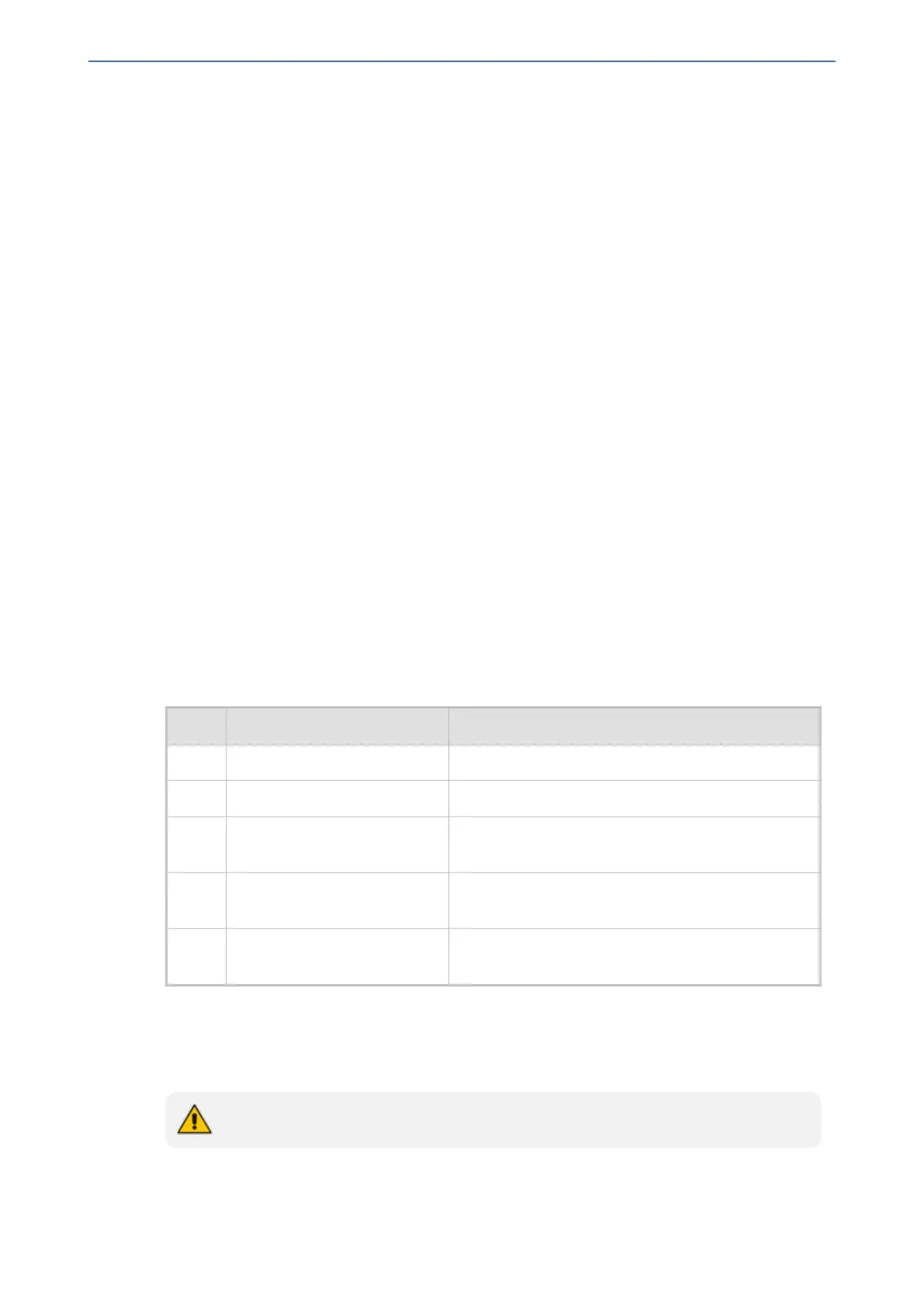CHAPTER37 Advanced SBC Features
Mediant 1000 Gateway & E-SBC | User's Manual
37 Advanced SBC Features
This section describes configuration of advanced SBC features.
Configuring Call Preemption for SBC Emergency Calls
The device supports emergency call preemption for SBC calls by prioritizing emergency calls over
regular calls. If the device receives an incoming emergency call when there are unavailable
resources to process the call, the device preempts one of the regular calls to free up resources for
sending the emergency call to its' destination (i.e., emergency service provider), instead of
rejecting it. The device may preempt more than one active call in order to provide sufficient
resources for processing the emergency call. Available resources depends on the number of
INVITE messages currently processed by the device.
If the device preempts a call, it disconnects the call as follows:
■ If the call is being setup (not yet established), it sends a SIP 488 response to the incoming leg
and a SIP CANCEL message to the outgoing leg.
■ If the call is already established, it sends a SIP BYE message to each leg. The device includes
in the SIP BYE message, the Reason header describing the cause as "preemption".
Once the device terminates the regular call, it immediately sends the INVITE message of the
emergency call to its' destination without waiting for any response from the remote sides (e.g., 200
OK after BYE). If the device is unable to preempt a call for the emergency call, it rejects the
emergency call with a SIP 503 "Emergency Call Failed" (instead of "Service Unavailable")
response.
For the device to identify incoming calls as emergency calls, you need to configure a Message
Condition rule in the Message Conditions table. Below are examples of Message Condition rules
for identifying emergency calls:
Table 37-1: Examples of Message Condition Rules for Emergency Calls
Index Name Condition
0 Emergency1 - RP header header.resource-priority contains 'emergency'
1 Emergency2 - RP header header.resource-priority contains 'esnet'
2 Emergency1 - user with
providers address
header.to.url.user=='911'
3 Emergency2 - user with
providers address
header.to.url.user=='100'
||header.to.url.user=='101'||header.to.url.user=='102'
4 Emergency3 - user with
providers address
header.request.uri contains 'urn:service:sos'
■ Indices 0 and 1: SIP Resource-Priority header contains a string indicating an emergency call.
■ Indices 2 to 4: Destination user-part contains the emergency provider's address.
The device applies the Message Condition rule only after call classification (but, before inbound
manipulation).
The device does not preempt established emergency calls.
- 820 -

